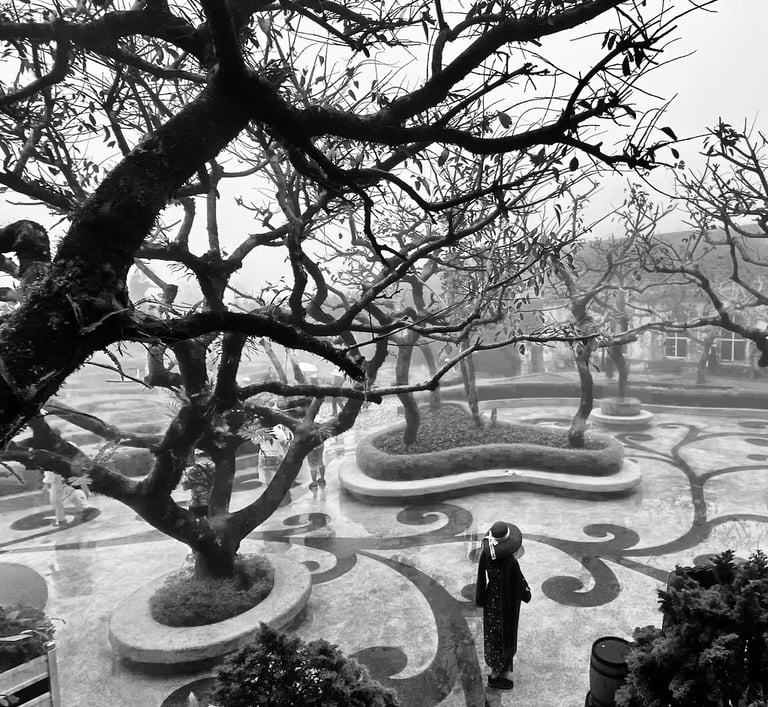Why Technology Alone Won't Make You a Better Street Photographer: The Importance of Returning to Basics
In today’s digital world, photography is more accessible than ever. Modern cameras come equipped with powerful auto features—auto-focus, auto-exposure, auto-ISO, auto-white balance, and even intelligent scene detection—practically making it possible for anyone to take a decent picture. So why, then, are we still flooded with so many poor-quality photos online? Why do so many images lack substance, composition, and emotional depth?
The answer is simple: cameras may have evolved, but photography remains an art. No amount of automation can replace the photographer's eye for detail, an understanding of light, or a sense of timing. This is why, despite the technological advancements, we still see so many snapshots that fall flat. Aspiring photographers need to return to the fundamentals—Photography 101—to truly understand what makes a photograph impactful and compelling.
The Technology Trap: Why Automation Isn’t the Answer
It’s tempting to think that advanced cameras can do everything for you. After all, these days you don’t need to worry about focusing manually, guessing exposure, or even understanding how light interacts with your subject. The camera will handle all of that for you—or so we’re led to believe.
The reality is that automation can only take you so far. A camera may be able to expose a scene correctly, but it can’t compose a shot with artistic intent. It can’t decide what the focal point of an image should be or tell you how to use light to evoke emotion. In fact, relying too heavily on automation can lead to complacency. When we assume the camera will do all the work, we miss the opportunity to exercise our own creative judgment.
Photography isn’t just about technical perfection—it’s about seeing the world in a unique way, about telling a story through an image. And this is where the basics come into play.






A Call to Return to Photography 101: The Fundamentals Matter
To create photographs that stand out, aspiring photographers need to understand the fundamentals of photography. The basics might seem old-fashioned in a world where technology is always evolving, but they remain as relevant as ever. Let’s take a look at some of the key concepts that every photographer should master:
1. Composition: The Art of Framing
Composition is the foundation of a good photograph. It’s the way you arrange elements within the frame to guide the viewer’s eye and tell a story. Even with the most advanced camera in the world, a poorly composed photo will fall flat. Learning basic compositional techniques like the rule of thirds, leading lines, framing, and symmetry can help you create images that are not only aesthetically pleasing but also convey a sense of purpose.
Why It Matters:
Good composition gives your image structure. It transforms a simple snapshot into something visually engaging and memorable. Understanding composition allows you to make deliberate choices about what to include or exclude from the frame, ensuring that every element of your photo serves a purpose.
How to Practice:
Start by analysing your favorite photographs and identify the compositional techniques at play. When shooting, consciously apply these techniques until they become second nature. Look for leading lines, strong focal points, and symmetry to elevate your images.
2. Understanding Light: The Photographer’s Paintbrush
Light is the single most important element in photography. The quality, direction, and intensity of light can completely change the mood and feel of an image. This is why an understanding of light is crucial for any photographer. It’s not enough to let the camera decide the exposure; you need to learn how to harness natural and artificial light to achieve the desired effect.
Why It Matters:
Light can add depth, dimension, and emotion to your photos. It can emphasise textures, create drama, or set a mood. A photographer who understands light can manipulate it to their advantage, using it as a tool to enhance their images and tell a more powerful story.
How to Practice:
Spend time observing how light changes throughout the day and how it interacts with different subjects. Practice shooting during different times (e.g., golden hour, midday, and blue hour) to see how light affects your images. Experiment with backlighting, side lighting, and harsh shadows to understand how light shapes your subject.
3. Timing and the Decisive Moment
Henri Cartier-Bresson famously coined the term "the decisive moment" to describe that split second when everything aligns perfectly in a scene—a moment of action, emotion, or spontaneity that tells a story. This concept remains as relevant today as ever, even in an era of high-speed burst modes and automatic focus tracking.
Why It Matters:
Timing is key to capturing meaningful photos. Whether it's a fleeting expression, a perfect movement, or an unexpected occurrence, being able to anticipate and recognise the decisive moment is what separates a great photograph from a mediocre one.
How to Practice:
Start by slowing down and observing the scene before you shoot. Try to predict what might happen next. Practice waiting for that perfect moment when everything comes together, rather than firing off a rapid series of shots and hoping one turns out right.
4. Manual Settings: Taking Full Control
While auto settings can be convenient, relying on them entirely limits your creative potential. Understanding and using manual settings—such as aperture, shutter speed, and ISO—gives you complete control over your image. This allows you to make intentional decisions about exposure, depth of field, and motion blur, rather than letting the camera dictate the outcome.
Why It Matters:
Manual settings enable you to break free from the constraints of automation. They allow you to experiment with different effects and push your creative boundaries. Once you understand how each setting works, you can use them to enhance your artistic vision.
How to Practice:
Begin by switching to manual mode in familiar shooting situations. Practice adjusting the exposure triangle (aperture, shutter speed, and ISO) to achieve different results. Over time, this will give you a deeper understanding of how each setting impacts your image.
Why Photography 101 Is Still Essential Today
Despite the automation and intelligent technology in modern cameras, the fundamentals of photography remain unchanged. Mastering these basics is what gives you the freedom to be creative. It allows you to use technology as a tool rather than a crutch. When you have a solid foundation, the camera becomes an extension of your vision—not a device that makes decisions for you.
This is why aspiring photographers should go back to Photography 101. By learning the essentials—composition, light, timing, and manual control—you’ll elevate your photography beyond what automation alone can achieve. You’ll gain the ability to create photos that are not just technically correct, but emotionally powerful, visually compelling, and uniquely yours.
Conclusion: Back to Basics for Better Photos
In the rush to embrace new technology, many photographers lose sight of the fundamentals that make a photo great. Automation can handle the technical details, but it can’t teach you how to see, feel, or compose an image. The basics of photography are timeless, and they remain the key to unlocking your creative potential.
So, the next time you’re tempted to rely solely on your camera’s auto settings, remember that the best photographs are born from a deep understanding of the fundamentals. Go back to basics—learn how to see the world through a photographer’s eyes—and watch your work transform from ordinary snapshots to extraordinary images.
Copyright © 2025 Peter Pickering. All Rights Reserved. All Wrongs Reversed.
🌐 peterpickering.com | 🎺 sessionsonthegreen.com | 💜 isaacbcole.com | ▶️ YouTube Channel | 🌿 life.peterpickering.com


